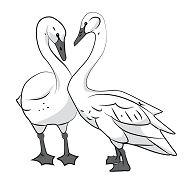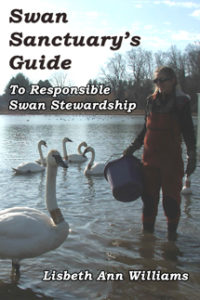I was invited recently to a meeting of the local garden club and also, invited to join. There was a speaker from the extension office who gave a talk about the various foliage diseases and fungi that can be seen on the leaves of many trees. He talked about ways to minimize the spread of the diseases, through good management, but he also mentioned fungicides for eradicating them. He said that he worked closely with local weed and pest people and that immediately sent up red flags for me.
I have always been an organic gardener – 100% organic – refusing to use chemicals under any circumstances. When he had finished his talk, someone brought up the subject of grasshoppers, which are a huge problem in this area. The presenter then began to name more than half a dozen different pesticides recommended “to get rid of the grasshoppers”. He mentioned one pesticide that infects a single grasshopper and then when the other grasshoppers feed on that grasshopper (grasshoppers being cannibalistic) they become infected, as well. The means, by which pesticides induce death in insects, is often cruel and sadistic. I bit my tongue so as not to say anything contradictory, being that I was an invited guest at their meeting.
In the case of grasshoppers, or any species that begins to out produce other species within an ecosystem, the first thought that comes to my mind, is that the ecosystem is severely out of balance. Then the question arises, “What can we do to restore the balance?” Not only are these chemicals dangerous and detrimental to all life, but it is taking the band aide approach to the problem. Rather than addressing the cause of the problem (monocultures, depleted soil, exposed soil, etc.) only the symptom is addressed, thus creating more symptoms down the road.
A diverse wildlife population (birds, mammals, beneficial insects, and pollinators) combined with a polyculture (fruits, flowers, vegetables, and herbs) will ensure that no single species out populates another. Grasshoppers become a problem whenever we have vast areas of monocultures (acres and acres of grass, wheat, soybeans, and wastelands, etc.). I have a healthy polyculture in my garden and I have had very few grasshoppers, but just down the road, where there are abandoned fields of grass and weeds, swarms of grasshoppers are dining on their favorite foods.
There are many bird species that eat grasshoppers, in addition to their primary diet of fruits or seeds. Nuthatches, sparrows, titmice, swallows, warblers, orioles, grosbeaks, chickadees, cardinals, and bluebirds, all eat grasshoppers. In fact, one bird species, the loggerhead shrike, is a threatened species because grasshoppers are its main diet. In eliminating grasshoppers, we are ensuring this bird’s eventual extinction. Spiders, ants, and flies will also eat grasshoppers. They are even eaten by rodents, skunks, raccoons, and opossums. Ground beetles eat grasshoppers while still in their larval stage.
If you want to have a yard and a garden that is not decimated by grasshoppers, plant one that is not inviting to them. Plant fruit trees or berries for the birds. They especially like chokecherry and mulberry. Plant trees and shrubs to provide cover and shelter for them. Offer fresh water by setting out a birdbath or fountain, or installing a pond – not only for the birds, but for the other critters that pass through your property. Make the birds welcome, and in return, they will help you rid your yard of most of the grasshoppers. Chickens too, will have a veritable feast when allowed to forage in an area with a large grasshopper population, which provides them with important protein. Whenever plants and animals and people work together, it creates good for all!



